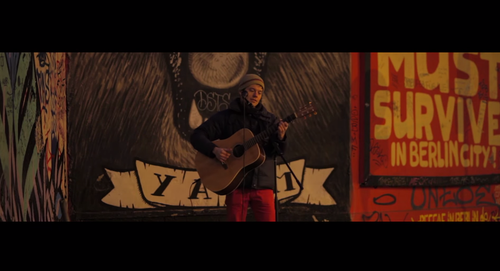Introduction
London Camera Exchange kindly supported my camera for my Audio Visual Postcard project and gave me three Nikon lenses to take and test in Berlin. The lenses were Nikon 24mm, 85mm and 135mm, all of which were second hand. The reason I approached LCE is because I love the second hand lenses they offer and the wonderful service they provide. Blogs and reviews are usually centered on new lenses but I want to show that good used lenses are out there and with LCE you can have the peace of mind of going to the shop and talking to an expert. In my case, the shop was the Guildford branch and the expert was Martyn Pearce, manager.
1. I had one piece of hand luggage for the trip so I had to get a low number of lenses with a good range. 2. This is not a technical review, I’m not a lens boffin; it’s all anecdotal. 3. I shot on a Canon 5Dmk2 body with Nikon lenses fitted with an adapter. 4. Only these three lenses were used.
Nikon 24mm f/2.8

A 24mm sample shot from the video. Full video at the bottom.
Looking Good This was my favourite lens on the trip and it was also the most expensive lens of the three and that surprised me. I would have assumed it would be the faster 85mm over the slower 24mm. Maybe it’s common knowledge that the 24mm is a very well made lens. I certainly loved using it. Pin sharp, with a nice soft creamy look. It may well have been the extra light coming in and the shape of the lens as opposed to the 24mm on my Canon 24-70mm f/2.8 zoom I’m used to using that lent itself to different colours, but it certainly had it’s own identity. With faster, tighter lenses, it’s easier to go into the detail of what the lens is like and explain why it’s so good. I really can’t put my finger on why this one was. It’s not that it was exceptional in low light, or had some kind of brilliant depth of field but…it was exquisite. I think the glass is just very well made.
Spacing Out Sticking on a 24mm just opened up so many options, and the width always surprised me. Occasionally I’d be putting on the 24mm thinking I’d need to take a few steps back but every time I was wrong an the width was perfectly wide enough. Starting the trip and picking out the lenses, I was slightly disappointed at not having a 20mm to take but, honestly, the 24mm gave me as much width as I needed and more. It’s plenty wide and opened up every space I was in. I think that the new low-budget generation of DSLR run and gun filmmakers have favoured tight, fast lenses with shallow depth of field with a swaying, inaccurate focusing as part of the look. However, I think a lot of filmmakers are scared of wider, slower lenses but they needn’t be. Take a minute longer to set up a wide shot and your video will be so much stronger for it and you’ll learn the art of composing a real shot, rather than letting the camera do the talking. Anyone with a 5D and a fast 50mm can make something look good, but it takes something more to create a good wide. And with a project like this where the aim is to capture the feeling of a place, the wide shot establishes that place and grounds the geography in a way that a tight lens can’t.

Next Week:
Reviewing 85mm f/1.8 on 4th November.
Links
London Camera Exchange website: http://www.lcegroup.co.uk
Audio Visual Postcard website: http://www.avpostcard.com

